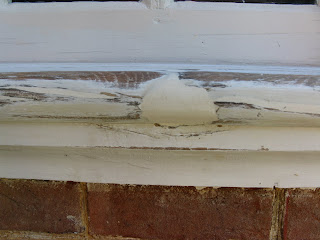Last spring, when presented with the chance to participate in the Founding Fathers Library Consortium with Mount Vernon and Gunston Hall, I was delighted. The Library Consortium website already offers on-line and on-site researchers a digital catalog of library holdings at those two historic sites, and, hopefully, Stratford Hall’s rare books will be cataloged along with the others by next summer. Not only will researchers be able to discover which rare books are located here, but we will also be able to know what’s in the collection and where each title is located.

Now I have the job of finishing the project! With the help of volunteer Maurice Capone, I have begun identifying and barcoding the rare books housed in the library basement. Some books are easy to find on the lists and others present challenges, particularly the books missing their title pages. I have a much higher regard for on-line research after discovering most of the elusive titles using Google search. I also have many more questions about our rare book collection that have tempted me to delve into the history of the collections themselves.
One of our major rare book collections, the Shippen family library, was given by the great, great-
Thomas Lee Shippen’s catalog identified the volumes in his personal library, a number of which were inherited from his father, Dr. William Shippen, and have Dr. Shippen’s name inscribed inside. Dr. William Shippen was noted for his service during the Revolution and for his role in medical education.
However, there are many more books in the Shippen collection that came to Stratford with bookplates other than the one used by Thomas Lee Shippen, including a beautiful armorial bookplate of William Byrd of Westover, armorial bookplates of John Banister, and others of James M. Nicholson. Where did they come from? A perusal of my trusty Lee family genealogical reference, Lee of Virginia 1642-1892, solved the mystery.
Thomas Lee Shippen (1765-1798) married Elizabeth Farley, widow of Col. John Banister, Jr., who was the daughter of James Parke and Elizabeth Byrd Farley [daughter of William Byrd and Elizabeth Carter]. Thomas and Elizabeth Shippen had two sons, one of whom [Dr. William Shippen] had a son Dr. Edward Shippen who married Rebecca Lloyd, daughter of James Macon Nicholson of Baltimore. Dr. Edward Shippen was a distinguished Civil War surgeon. Two of their grandsons [sons of Dr. Lloyd P. Shippen] who donated the family collection to Stratford, actually gave us several libraries accumulated by noteworthy families:
The Nicholsons of Maryland
James Macon Nicholson (1808-1875), inherited the library of his father, the Hon. Joseph H. Nicholson of Maryland, who was elected as Maryland delegate to the Continental Congress in 1777 (but did not serve) and as a Republican to the Sixth, Seventh, Eighth, and Ninth Congresses. James’ daughter, Rebecca, had “Maryland, My Maryland” set to music and published, just as her grandfather, Judge Joseph Nicholson, had done for the “Star Spangled Banner.” Francis Scott Key had given his brother-in-law, Judge Nicholson, the handwritten manuscript of the “Star Spangled Banner” in 1814, and the document passed down for two generations in that family before it was sold in 1907 to the Walters Art Gallery.
The Banister Family of Virginia
The first Virginia naturalist was Rev. John Banister (c.1650-1692), a close friend of William Byrd I of Westover. Banister was accidently killed while exploring the lower Roanoke River with some men in Byrd’s entourage. After Rev. Banister’s death, his notes and collections were acquired by some of the most notable collections and libraries in England; however, William Byrd became the guardian of Banister’s namesake son and obtained his library of eighty or more volumes of natural history and travel books. Byrd’s library eventually passed to his grandson William Byrd III, whose widow sold the entire collection to a Philadelphia bookseller in 1777. The library was sold piecemeal. However, we know that some books (at least one or more!) were retained by Byrd’s daughter, Elizabeth. Banister’s ownership is signified by his name stamped in ink; thankfully, it was not obscured by William Byrd I’s ornate bookplate.
Another large part of the Shippen collection was owned by Col. John Banister, the grandson of the Rev. Banister mentioned above. Col. Banister (1734-1788) built Battersea in Petersburg, Virginia, and was a member of the first 
We will keep our readers updated on this fascinating rare book project, which will be completed this coming year.





























